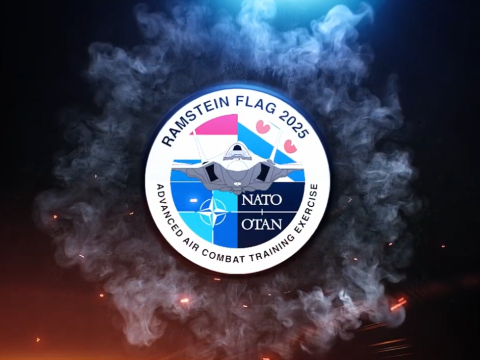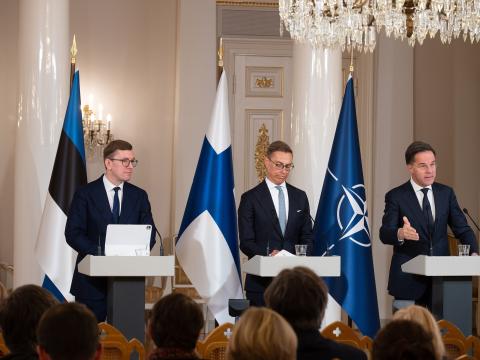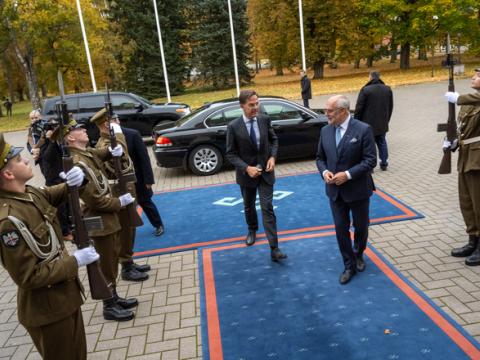Collaboration Key to Multinational Transformation
NATO’s power will grow as partnerships between governments and industry combine their strengths to increase security and bring about progress. The challenges nations face are as much about culture and people as they are about finding the right technologies and efficiently introducing them into the networking ecosystem.
More than 600 senior public and private sector leaders met at NITEC18 to learn about emerging capabilities, discuss digital transformation and collaborate to address the challenges NATO is facing today. The event took place in Berlin and was organized by AFCEA International in cooperation with the German Federal Ministry of Defence.
Supporting the theme of “NATO’s Digital Endeavour: Expanding the Ecosystem,” representatives from the NATO Communications and Information Agency (NCI Agency), Bundeswehr Cyber Innovation Hub and numerous technology firms discussed the importance of encouraging innovation to truly expand information sharing. The alliance currently is undergoing what leaders have called the single largest technology modernization since the end of the Cold War. Consequently, they are depending on the private sector to understand the goals of the transformation.
During the next 18 months, NATO will be calling for bids on contracts worth more than €1.2 billion ($1.4 billion). The investments will be in areas such as integrated air and missile defense, advanced software for troops and logistics, and information and knowledge management.
Gartner Inc., a company with offices worldwide, was brought in to help NATO create an ecosystem for a successful digital transformation. The company predicts that by 2020, five of the top seven digital giants will willfully “self destruct” to create their next leadership opportunity. Gartner’s study also found that by 2021, 75 percent of digital leaders will dominate a disruptive market segment that did not exist prior to their ascendance. In addition, the company’s research determined that by 2022, platform business models will create new market leaders in 50 percent of all industries.
Encouraging the leadership needed to address these near-term changes, Marcel "Otto" Yon, CEO, Bundeswehr Cyber Innovation Hub, said, “We have too many lawyers and not enough innovators ... too many engineers and not enough scientists ... too many business administrators and not enough entrepreneurs. ... The CEO needs to initiate innovation.”
Dr. Julia Glidden, general manager, global government industry, IBM, echoed this call for inventive thinking. “We have to think about IT infrastructure as becoming a commodity. The limitation is in our mind. Think about the user experience, people, process and culture change. Imagine if we [provide] immediate situational awareness to our warfighters,” she said.
Brig. Gen Jens-Olaf Koltermann, chief of division cyber/IT governance, Federal Ministry of Defence, Germany, also agreed that technology transformation must go beyond tools, techniques and tactics. “Digital transformation is a culture change, not just for a company, but the nation. The IT budget was always the first to be cut. Not anymore,” he stated.
To highlight ingenuity at the event, NITEC18 featured the third annual Defence Innovation Challenge. The competition aimed at accelerating revolutionary state-of-the-art technologies from small businesses and academia that support NATO command, control, communications, computers, intelligence, surveillance, reconnaissance and cyber capabilities. The top ten winners showcased their solutions at the event.
Among the presenters was CybExer Technologies from Estonia. The company described its data visualization tool called Integrated Scoring and Awareness, which conducts complex real-time visualization, comparing data gathered during military exercises. The solution is based on eight years of research and experience in conducting cybersecurity exercises, including NATO’s Cooperative Cyber Defence Center of Excellence’s Locked Shields and Crossed Swords.
InnoVet Europe, supported by the Defence Innovation Greenhouse, presented a solution to meet the public sector’s requirements, including those found in military environments. The Managed Response open-source suite consists of a cloud-native backend for extra resilience and elasticity that enables iOS and Android mobile apps and a mobile web implementation communicate in a secure environment.
Other challenge winners included Cranfield University doctorate student Alessandro Busachi, SensorUp Inc., ID Quantique, Dogtown Media, Kognitiv Spark, rasdaman, Eomax and Troika Solutions.
Roger Krone, chairman and CEO, Leidos, reported the information technology transformation of NATO’s newest building is 70 percent complete. He credited the success of the project to unfettered access to leadership and seamless cooperation between NATO and its industry partners. Leidos is leading a team of more than two dozen contractors working on the project.
Companies interested in working with NATO should focus its efforts in several areas, the organization’s acquisition experts agreed. They should follow NCIAAcquisition on Twitter but also should understand that the NCI Agency works its own procurements as well as serves as a contracted procurement agency for other NATO countries. In addition, they should have NATO security clearances in place by the bid closing date. Finally, for each opportunity they bid on, prime contractors as well as subcontractors must be deemed eligible by their country's NATO Expert, or NATEX.






Comment
Websites you may find useful
The agency's portal view opportunities, Basic Ordering Agreement Orders (BOAs) and Standing Ordering Agreements (SOA) is found here:: https://www.ncia.nato.int/industry/Pages/Home.aspx.
To be a supplier for NATO, register with NATO Support and Procurement Agency (NSPA): https://eportal.nspa.nato.int/Registration/OnlineRegistration.aspx
Nice post. Thanks for sharing
Nice post. Thanks for sharing
https://www.wiinnova.com
Comments